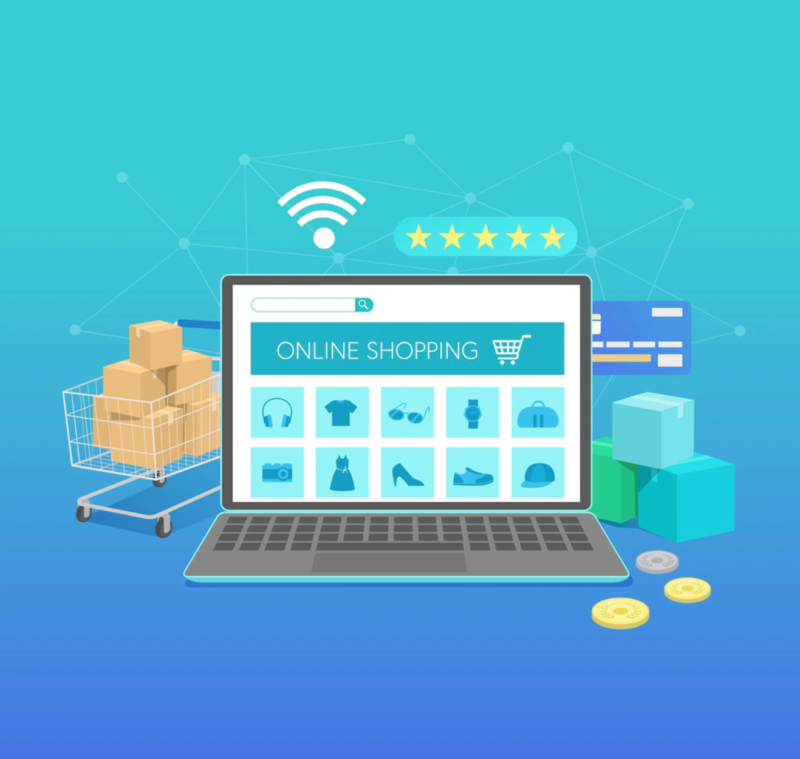
Marketing, Software Development, Web Development
How To Build Low-Cost Ecommerce Websites for Startups
Mrunal Pandit
Posted on September 2, 2022 - 0 Comments
Every day, thousands of e-commerce websites are launched. They include anything from established brick and mortar companies opening a digital front to fresh startups, each with their own benefits and difficulties. However, one area where startups fall short is in terms of resources. They typically work with lower budgets that they must properly manage, and if their eCommerce website consumes the majority of their cash, they could not have any left over for other business expansion strategies. If you are experiencing this issue as well, you should make learning how to build a cheap eCommerce website a top priority.
Three Ways to Build an Affordable eCommerce Website for Your Startup
You essentially have three options if you’re searching for the cheapest approach to build an eCommerce website.
- Build and develop your own e-commerce website “on your own” without using a platform like Shopify or BigCommerce. Although it costs little, it takes more work.
- Build and host your website using an eCommerce platform – The convenience of creating a website and the abundance of support come with this option, which has recurring charges (a monthly subscription). Depending on the subscription plan you select, it can be regarded as a low-cost choice, but it’s typically the most expensive of the three.
- Outsource the development of your online store -For a one-time fee, you may hire experts to develop your website, which you can then edit and maintain on your own. It’s a genuine cheap alternative for an eCommerce website.
1. The DIY online store
Even though this option is better if you are knowledgeable with computer programming, practically anyone can design an eCommerce website with enough time and devotion thanks to the abundance of educational materials and step-by-step guidelines available online. The actions are detailed below:
Choose a web developer for your online store.
You can utilise an open-source headless eCommerce solution (like Medusa, a contender for Shopify’s spot in the market), but it’s best suited for people with a techie bent. That’s not the best choice for you if you lack the necessary technical expertise and don’t want to spend weeks slogging through technical speak simply to have your eCommerce store up and operating.
Then there are solutions like Wix, one of the most popular and user-friendly website builders, that let you design an eCommerce website for nothing using drag and drop. However, you will have to purchase a monthly subscription after you publish your website and begin taking money.
Another popular and cost-free option is to build an eCommerce website on WordPress using the WooCommerce plug-in (even though it’s not the greatest solution). Any website can integrate eCommerce capabilities thanks to it. Other free plug-ins are also available, and they provide you more options and the ability to further customise your eCommerce website.
Select your hosting package and domain name.
If you are creating an eCommerce website on your own, the hosting package will be the only real expense. In addition to the price, it’s important to take into account aspects like dependability, reputation, uptime, speed, security, and more.
HostArmada and Dreamhost are WordPress’ own top suggestions, but you can also choose Hostinger and Hostgator. The most economical starting plan is provided by HostArmada and costs $2.99 per month.
The DIY Approach: Pros and Cons
Pros
- Most affordable methods for building eCommerce websites.
- Provides a wealth of tools, plug-ins, and flexibility.
- You may update and change the website yourself, which saves money and time.
Cons
- Demands extensive time and effort.
- A challenging choice for those with little technical expertise
2. Building and hosting your website using an eCommerce platform
You can create and operate eCommerce stores and websites using platforms for eCommerce (such as Shopify and BigCommerce), and they handle all of the website’s hosting and upkeep. They are the least cost-effective, low-cost eCommerce website choice for startups because all of these expenses are included in a monthly membership.
Both Shopify and BigCommerce have very similar lowest monthly subscription rates: $29 and $29.95, respectively.
Because the website builder, all the themes, tools, and plug-ins are tailored specifically for eCommerce and the associated eCommerce ecosystems, building websites on these eCommerce platforms is comparatively simpler. Even for eCommerce websites with tonnes of plug-ins and additives, this might offer good functionality and speed. BigCommerce offers about 170 themes and templates, compared to over 100 offered by Shopify.
Pros and Cons of Using an eCommerce Platform
Pros
- Significantly simpler for those without technical expertise.
- A website can be built and launched in a very short amount of time.
- Your membership plan includes integrations, hosting, and maintenance.
- You can swiftly resolve issues with your eCommerce store thanks to 24/7 help rather than fumbling around on your own.
Cons
- The more expensive.
- For developers, there is still a learning curve.
3. Contracting out the development of eCommerce websites
You may sort of have the best of both worlds by outsourcing. You not only receive top quality at a truly inexpensive, one-time cost when you work with the proper developer or development team, but you also save a tonne of time. Spending all this time on expanding your online store would be more beneficial.
While outsourcing the production of an economical, low-cost eCommerce website for your company does keep you out of the process, working with the proper eCommerce development firm can give you a lot of control over the end result in terms of both quality and price. You can select the subject, indicate the structure and aesthetic you prefer (in keeping with your business image), and include any other details you require in your ecommerce website.
Make sure you obtain all the features your eCommerce website will require when you outsource, at the very least for the foreseeable future. The entire purpose of outsourcing the development of an eCommerce website is to enable quick and easy launch. However, if the finished product is lacking in certain features and you lack the ability to add them, it can end up costing you more (both financially and in terms of time) than if you had paid a larger development fee in the first place.
It’s vital to remember that you will need to understand how to analyse your traffic as well as how to add or remove things from your website.
Benefits and Drawbacks of Outsourcing
Pros
- Professionals with experience created the website.
- “Time To Market” can happen very quickly.
- The learning curve has shrunk considerably.
- Before you decide to spend additional time and effort on enhancing your website (and deciding if it’s worthwhile), you get to see your eCommerce business operating.
Cons
- Your control over small aspects of your inexpensive eCommerce website is rather restricted.
- The selection of the best development team is crucial to the success of this strategy.


